If you’ve ever visited Ishikawa Prefecture in Japan’s Noto Peninsula, you may have heard of Notojima Aquarium. Nestled on Notojima Island, this beautiful aquarium has long been a favorite destination for families, marine lovers, and travelers seeking a quiet coastal escape.
We recently had the chance to revisit, and seeing its transformation after the devastating 2024 earthquake made the experience especially powerful.
Before the Quake: Why Notojima Aquarium Was So Beloved
Notojima Aquarium was known for its large and diverse marine habitats. It featured exhibits ranging from jellyfish and coral reefs to large tanks housing whale sharks, dolphins, penguins, sea lions, and many more sea creatures. Among its signature attractions were the majestic whale sharks, especially Hachibee and Haku, which drew many visitors each year. The dolphin shows, sea lion performances, and regular “penguin walks” were charming highlights.
The aquarium’s location was also part of its charm: surrounded by the Sea of Japan, with views across Nanao Bay and easy access from the town of Nanao. Many visitors combined their visit with a stay in local hot springs, walking along the shoreline, or exploring the other natural beauty of the Noto region.
The Earthquake of January 1, 2024 — A Sudden Blow
Everything changed on New Year’s Day, 2024, when a magnitude 7.6 earthquake struck the Noto Peninsula. ウィキペディア+2日本テレビ+2 The damage to Notojima Aquarium was severe: the ceiling collapsed in places, major damage occurred to the filtration and plumbing systems, and the water levels in some of the main tanks dropped dramatically. News On Japan+1
Tragically, the aquarium lost about 3,400 sea creatures, including the famous whale sharks Hachibee and Haku. News On Japan+1 Other exhibits were also impacted, and many of the sea animals had to be evacuated to other facilities for their safety. 日本テレビ+1
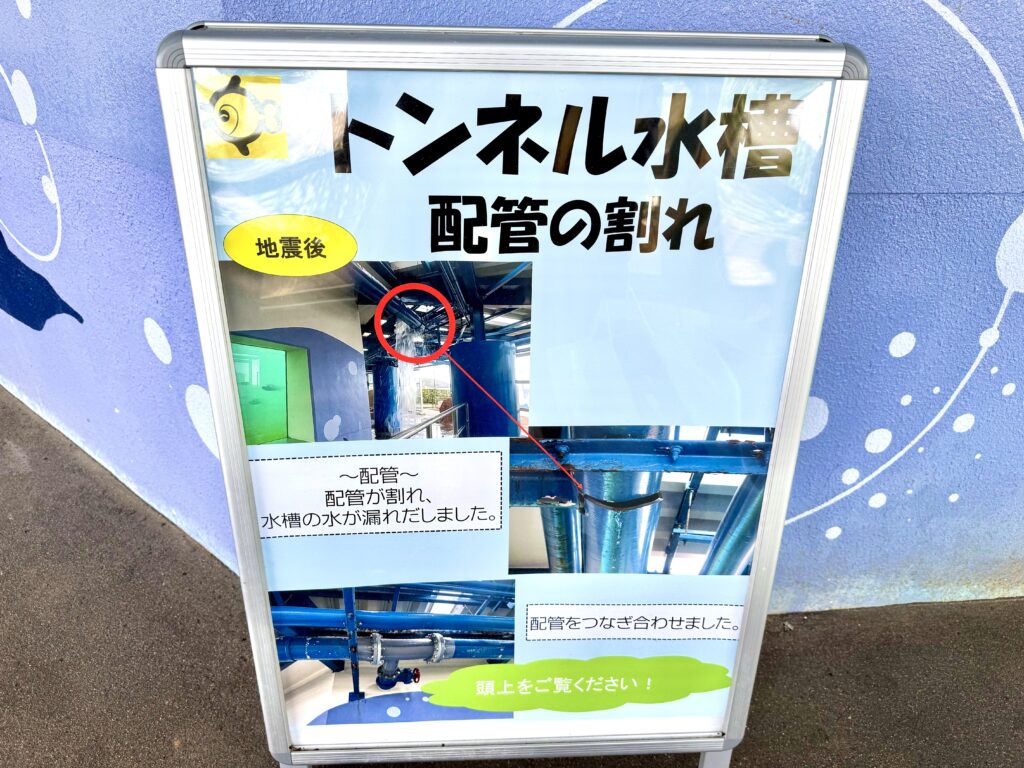
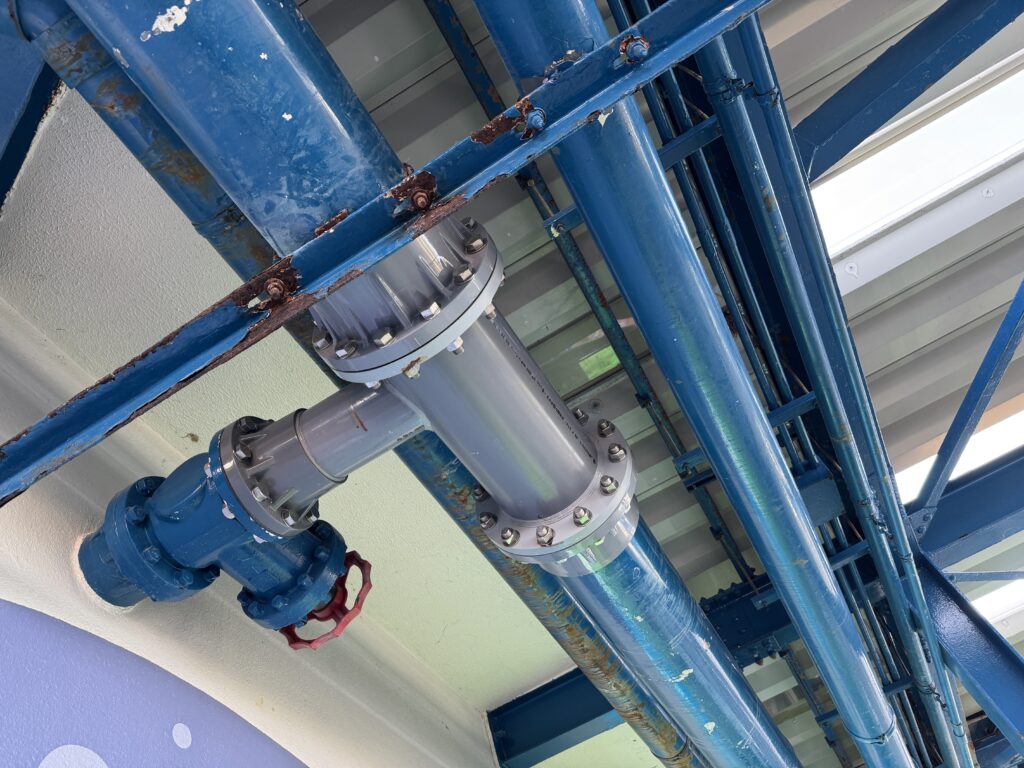
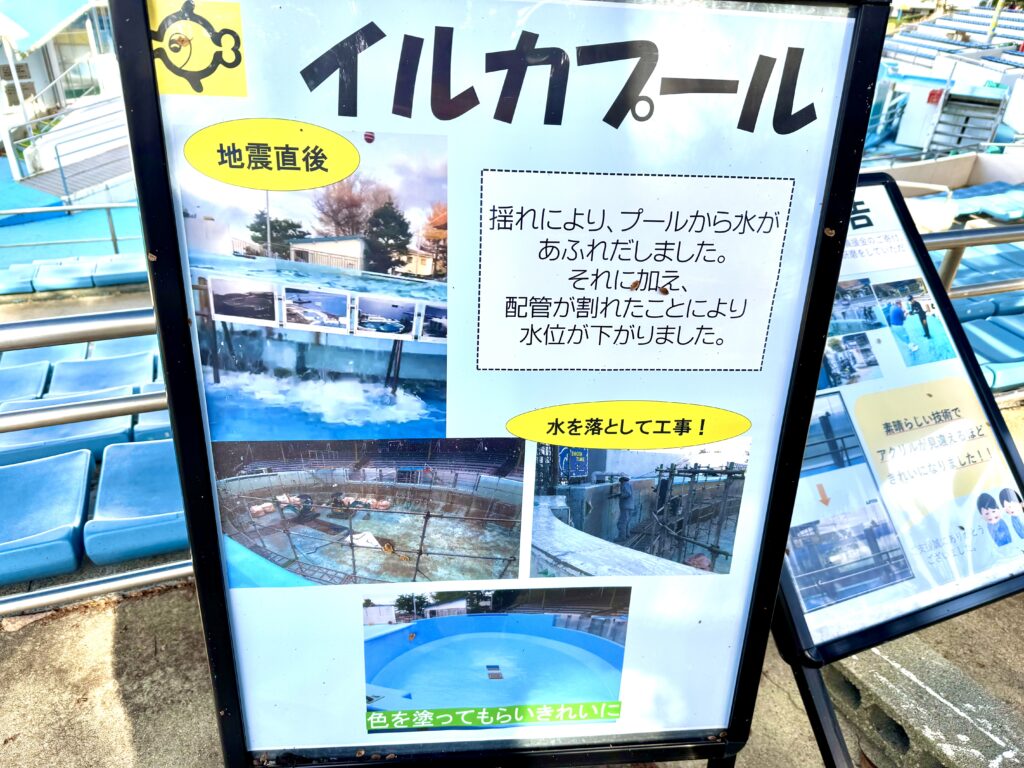
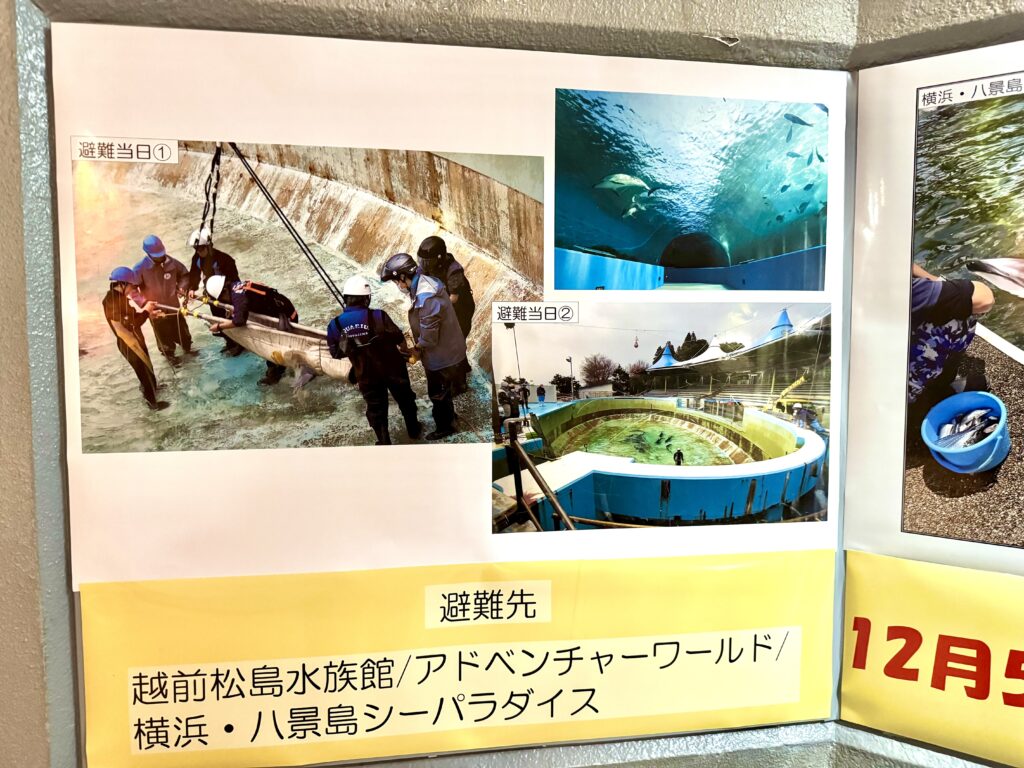
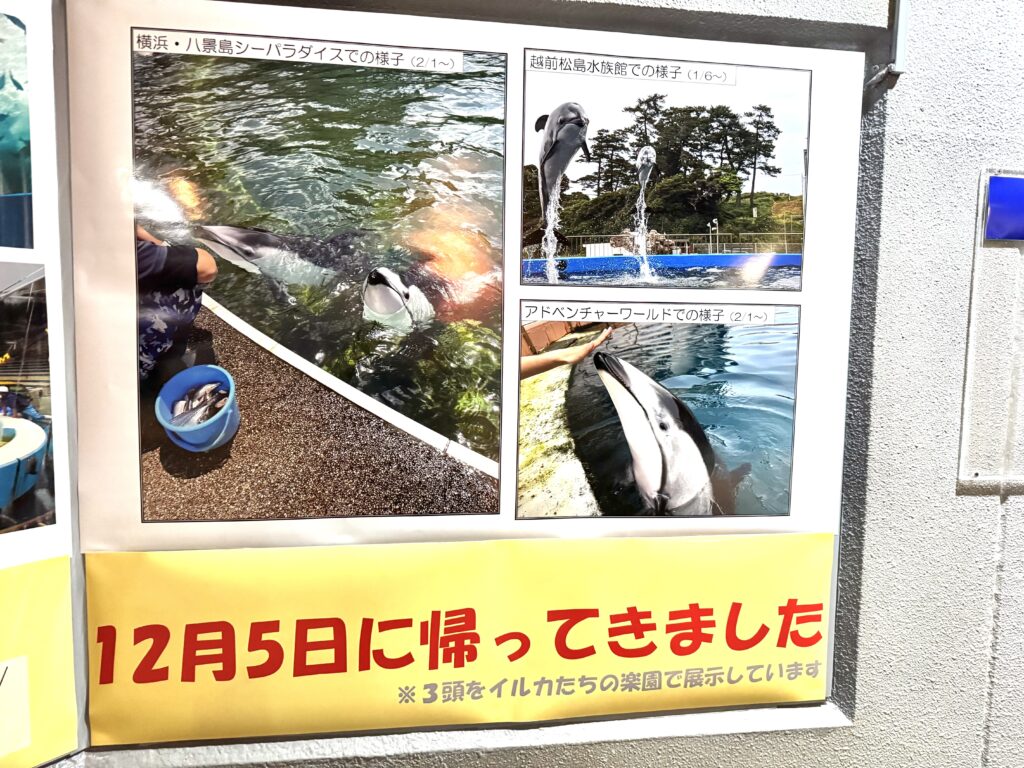
There were signs everywhere, which described the damage caused by the earthquake.
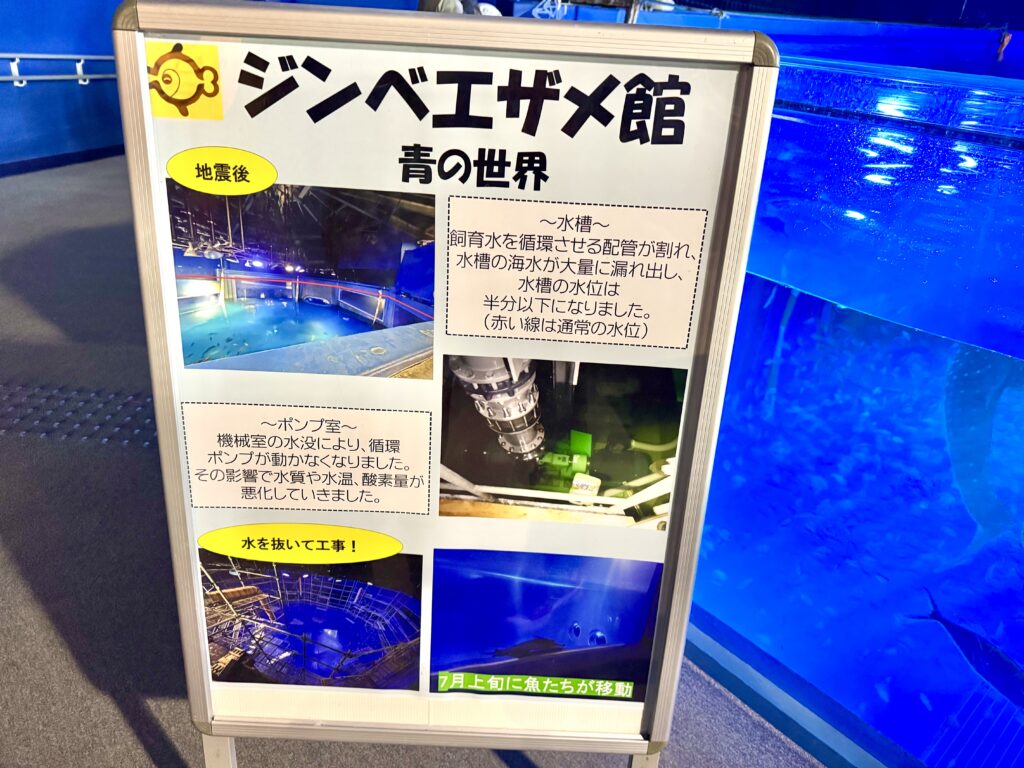
Rebuilding and Reopening
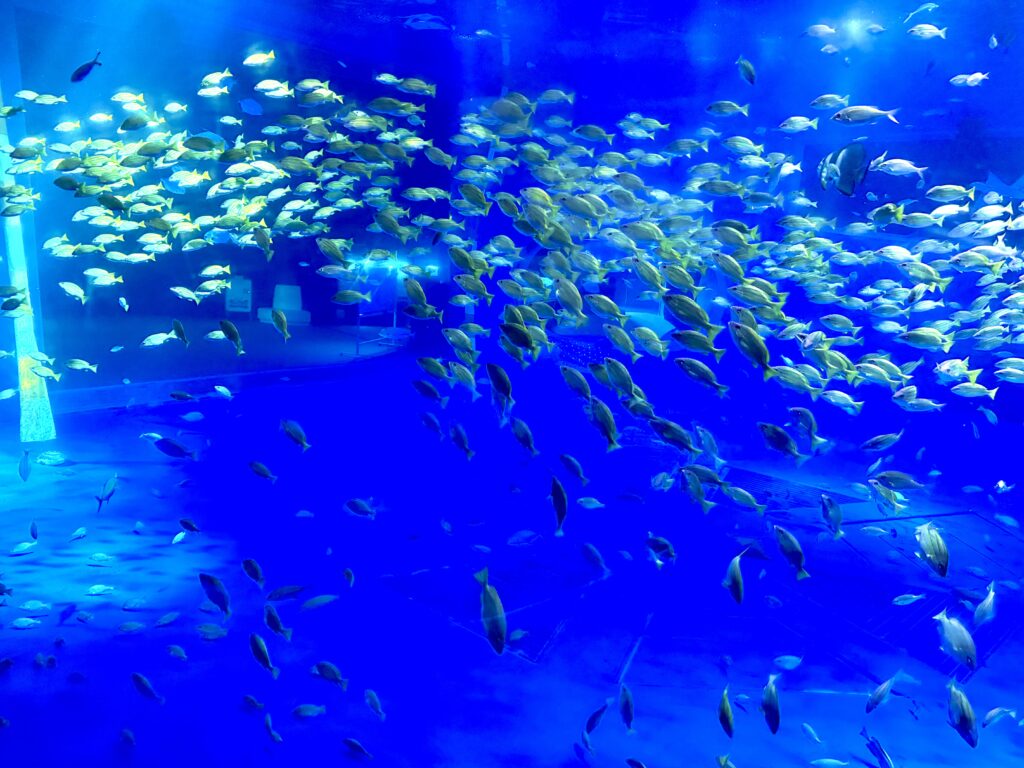
Even with such huge loss and destruction, the aquarium staff, the local government, and community rallied to restore its operations. It partially reopened in July 2024, with limited exhibits and facilities, while reconstruction continued in other areas. 日本テレビ+1 Over the months, more exhibits came back — for example, in October 2024 a new whale shark named “Momo” was introduced, marking a hopeful new chapter. News On Japan+1
A symbol of normalcy, popular features like the penguin walk returned, and eleven dolphins that had been relocated temporarily to other aquariums were brought back in December. News On Japan Then, on March 22, 2025, after about 15 months, Notojima Aquarium officially fully reopened its doors. The dolphin show returned, the sea lion exhibit was reconstructed, and visitors were welcomed back to all attractions. News On Japan+1 Admission prices also returned to pre-earthquake levels. News On Japan
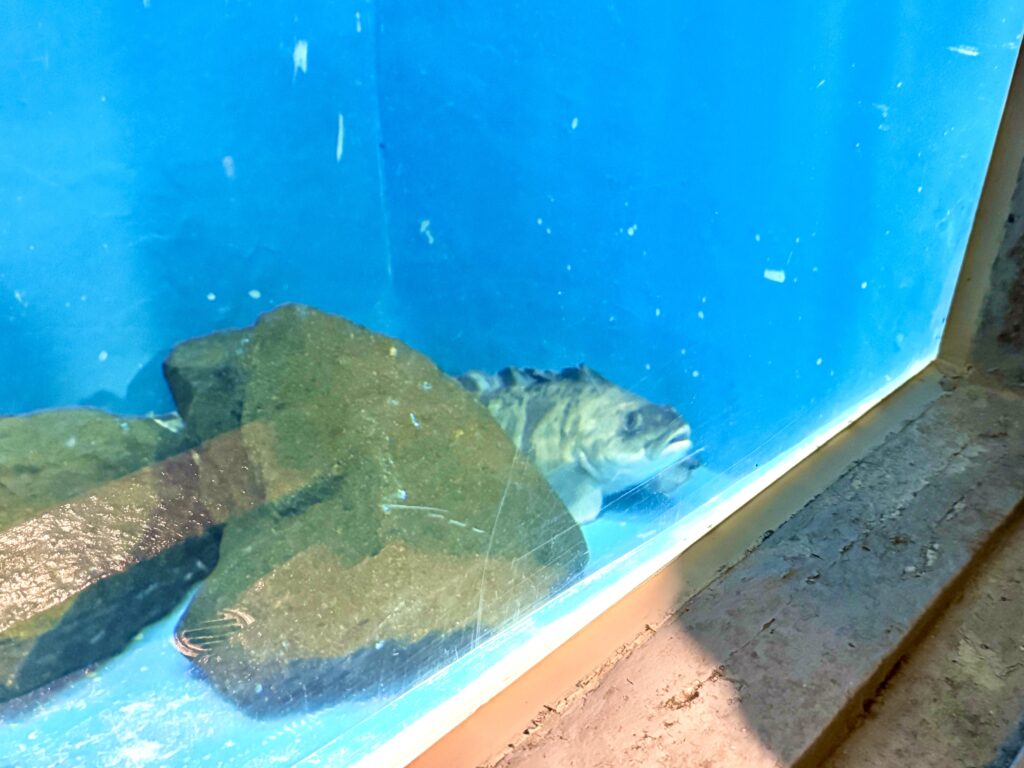
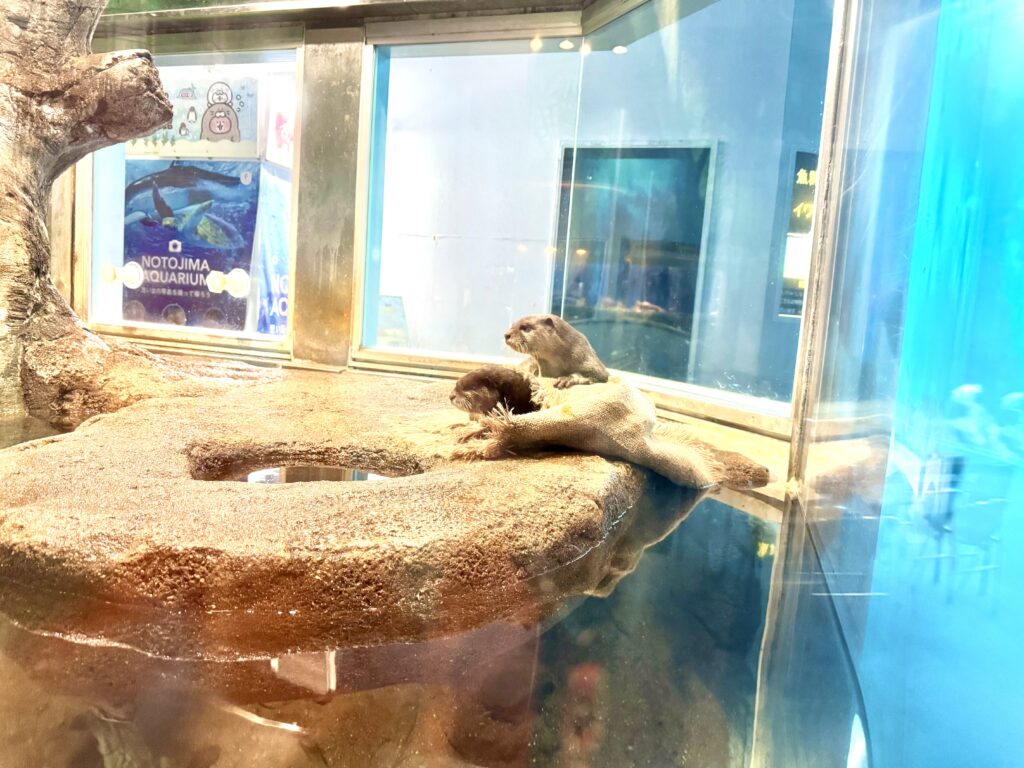
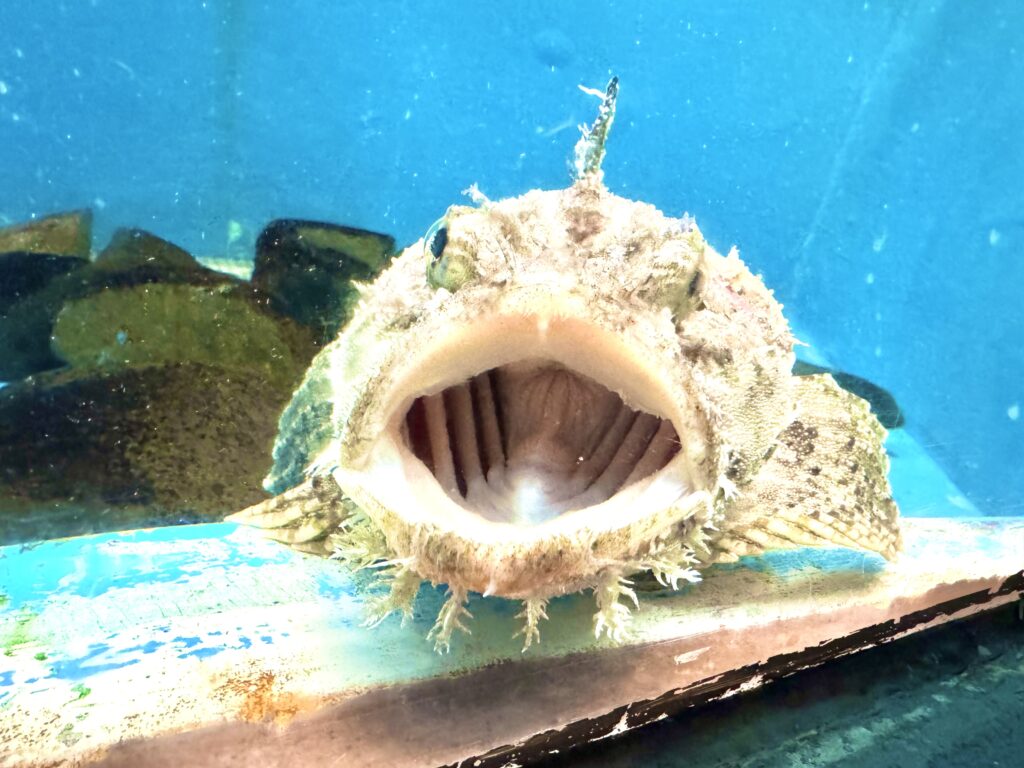
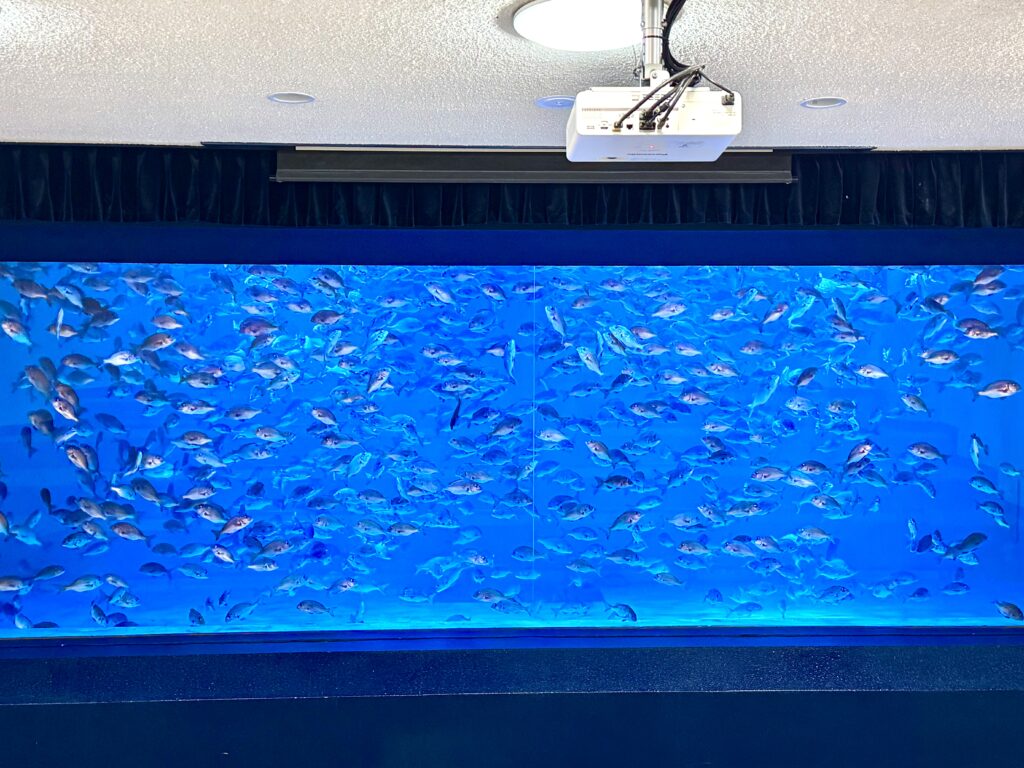
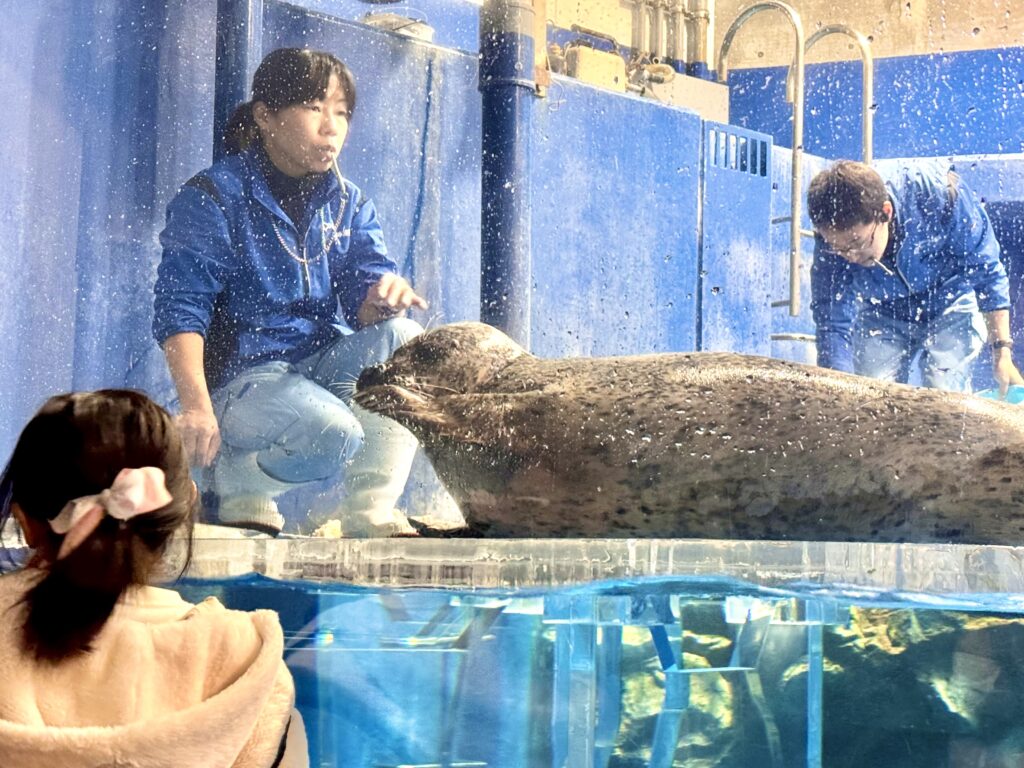
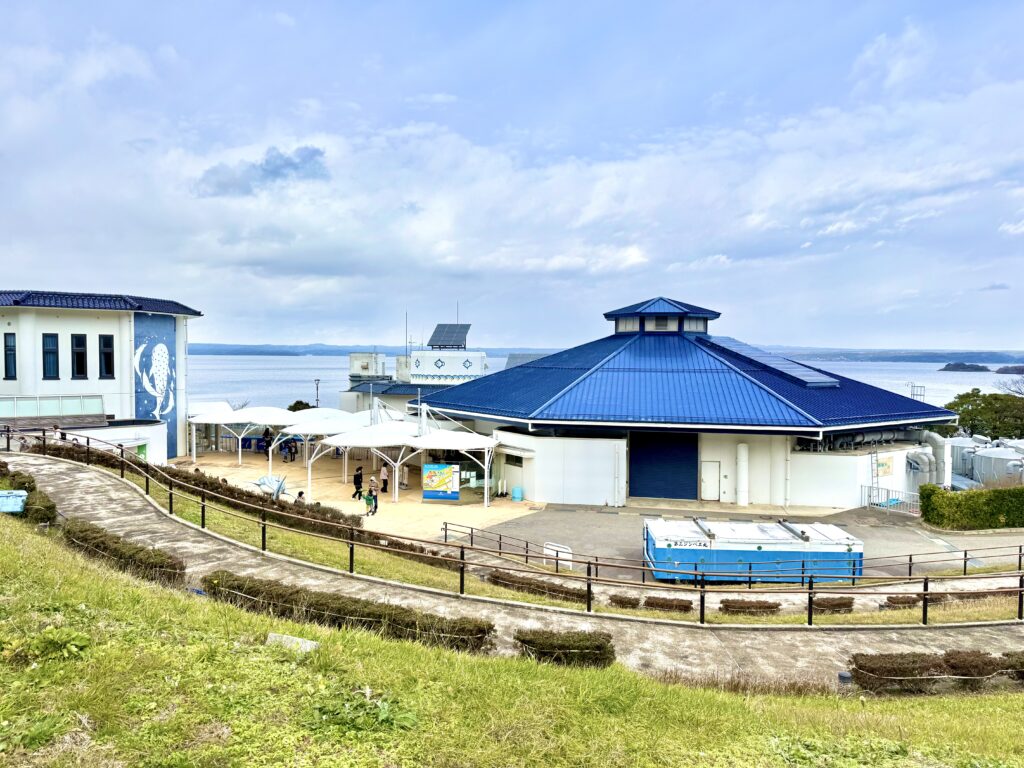
Our Visit: Seeing Resilience in Motion
When we visited after the reopening, I was struck by how hopeful the atmosphere felt. Despite the pain and losses, the new exhibits had a certain freshness to them—both literally and metaphorically. The water in the tanks was clean, systems seemed solid, and the sea animals seemed healthier, thanks to improved care during their time in temporary homes.
We visited in January 2025, so the dolphin show hadn’t been resumed yet.
We were able to feed the dolphins. It was our first time feeding dolphins. We had never seen anything like it at other aquariums before.
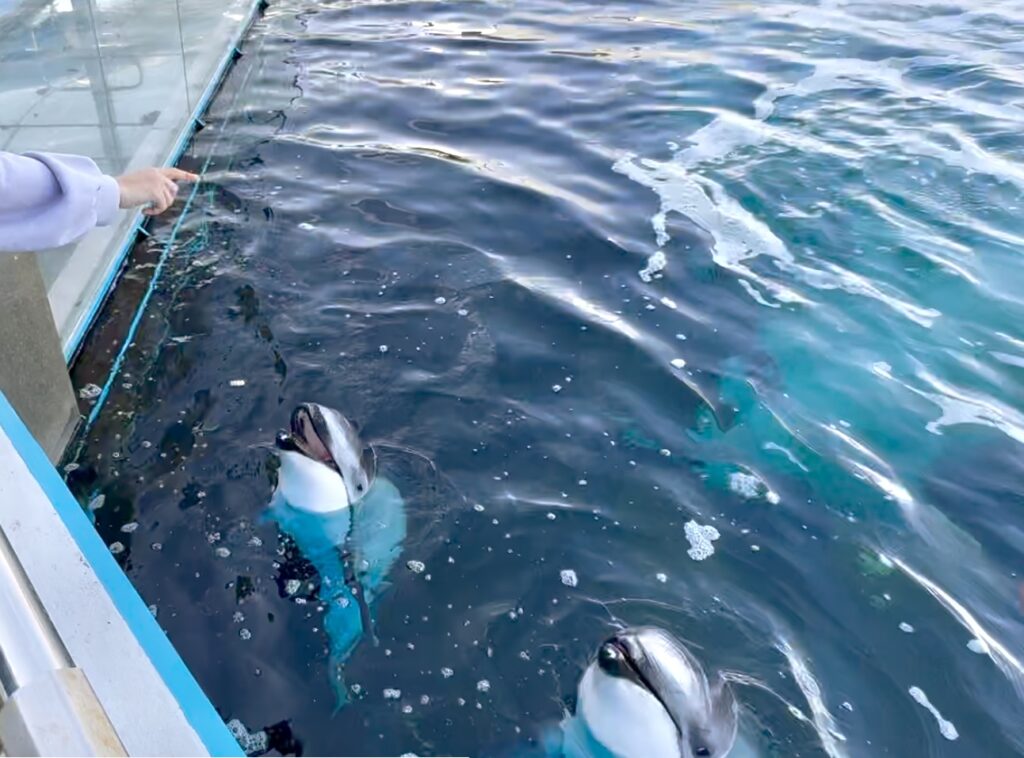
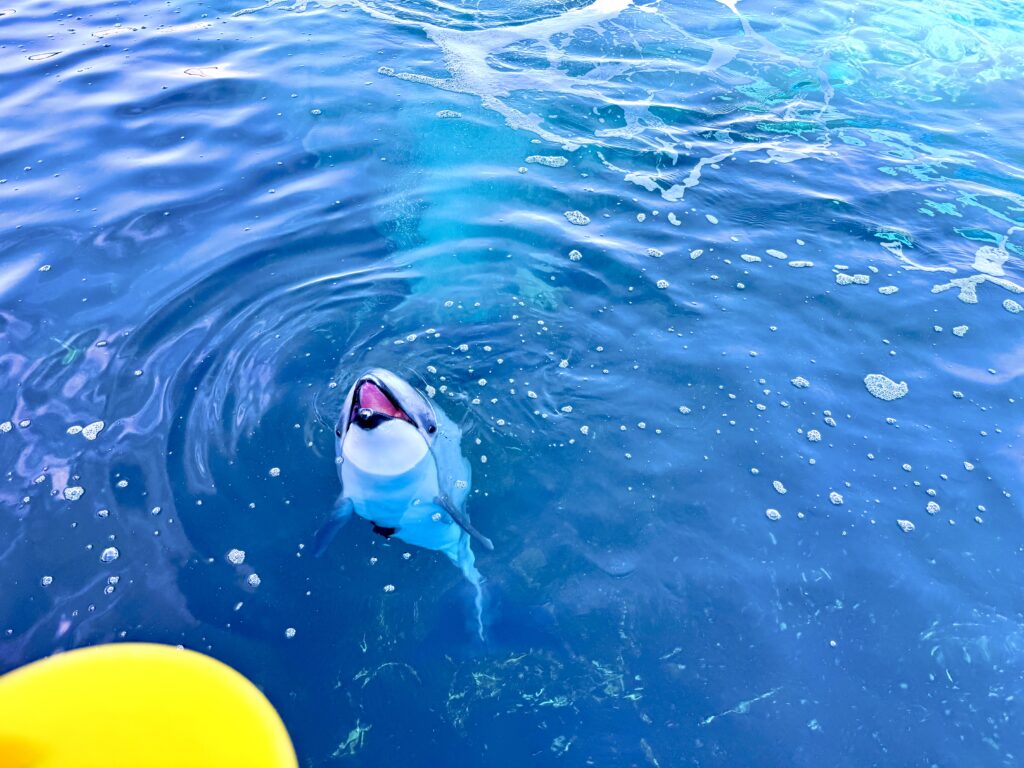
We also spent time at the whale shark tank with “Momo,” reflecting on how much was lost, and yet how much care and effort had gone into making things right.
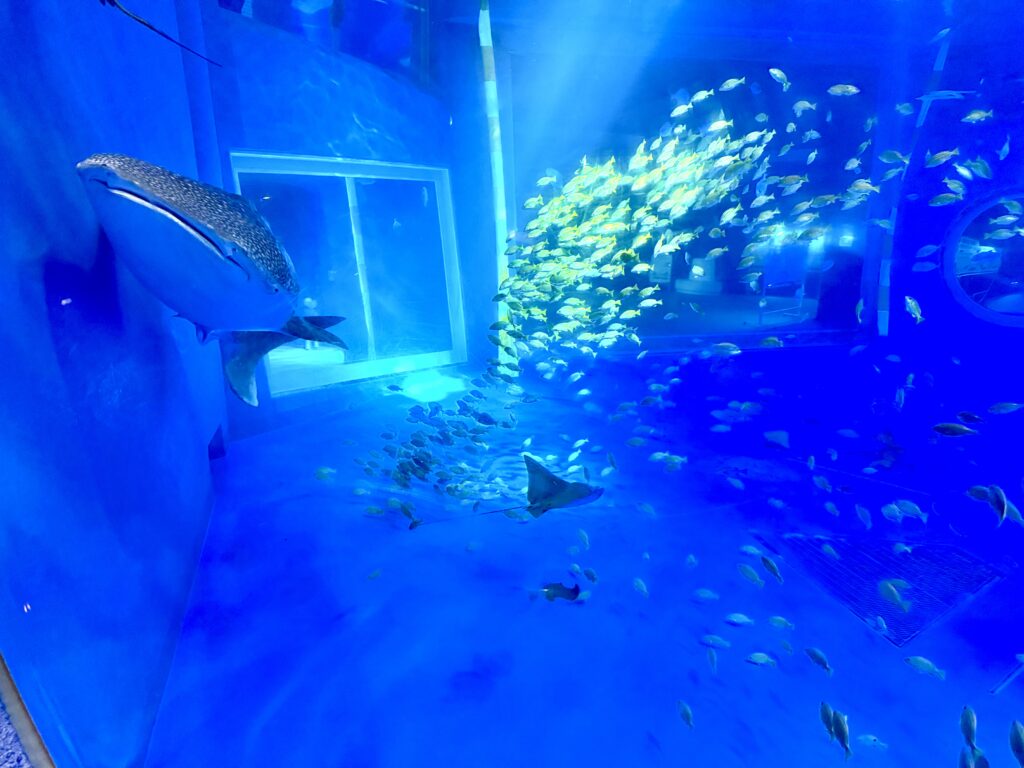
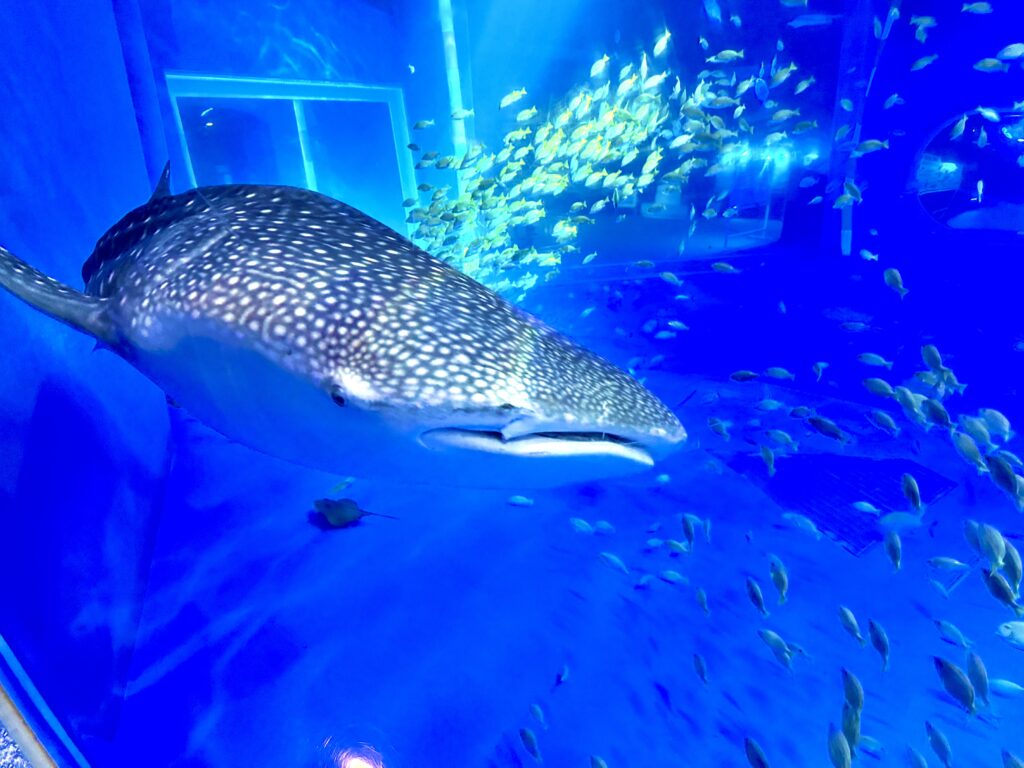
What to Know If You Visit
- Access: Notojima Aquarium is located on Notojima Island in Nanao City, Ishikawa Prefecture. It is accessible via road from Nanao.
How to get to Notojima Aquarium from Tokyo
1. By Train + Bus (Most Common)
- Take the Hokuriku Shinkansen from Tokyo Station to Kanazawa Station (about 2.5–3 hours).
- From Kanazawa, take a limited express train (Nanao Line) or express bus to Nanao Station (about 1.5 hours).
- From Nanao Station, take a local bus bound for Notojima Aquarium (around 1 hour).
- Total travel time: about 5–6 hours.
2. By Shinkansen + Rental Car (Flexible Option)
- Take the Hokuriku Shinkansen to Kanazawa Station.
- Rent a car at Kanazawa Station.
- Drive to Notojima Aquarium via the Noto Satoyama Kaido Expressway and Notojima Bridge (about 2 hours).
- Total travel time: about 4.5–5 hours.
- Recommended if you want to explore other spots in Noto Peninsula.
3. By Highway Bus + Local Bus
- Take a highway bus from Tokyo (Shinjuku or Ikebukuro) to Kanazawa (overnight bus option available, about 7–8 hours).
- From Kanazawa, transfer to train or bus to Nanao.
- From Nanao, take the bus to the aquarium.
- Total travel time: about 9–10 hours, but cheaper than shinkansen.
4. By Air + Rental Car
- Take a domestic flight from Haneda Airport to Noto Airport (about 1 hour).
- From Noto Airport, rent a car and drive to Notojima Aquarium (about 40 minutes).
- Total travel time: about 3–4 hours including airport transfers.
- Fastest way if you prefer flying.
✨ Each route has its charm
- Train + bus: easiest for public transport travelers.
- Shinkansen + car: best balance of speed and flexibility.
- Bus: budget-friendly, slower.
- Flight: fastest, but limited schedules.
- Opening: Fully reopened since March 2025 after months of restoration.
- What’s Back: All main exhibits are operating again—dolphin shows, sea lions, penguins, and the introduction of new and surviving animals.
- What to Expect: Improved infrastructure, possibly some newer or altered exhibits due to reconstruction; but overall, the aquarium is back to being one of the premier marine attractions in the region.
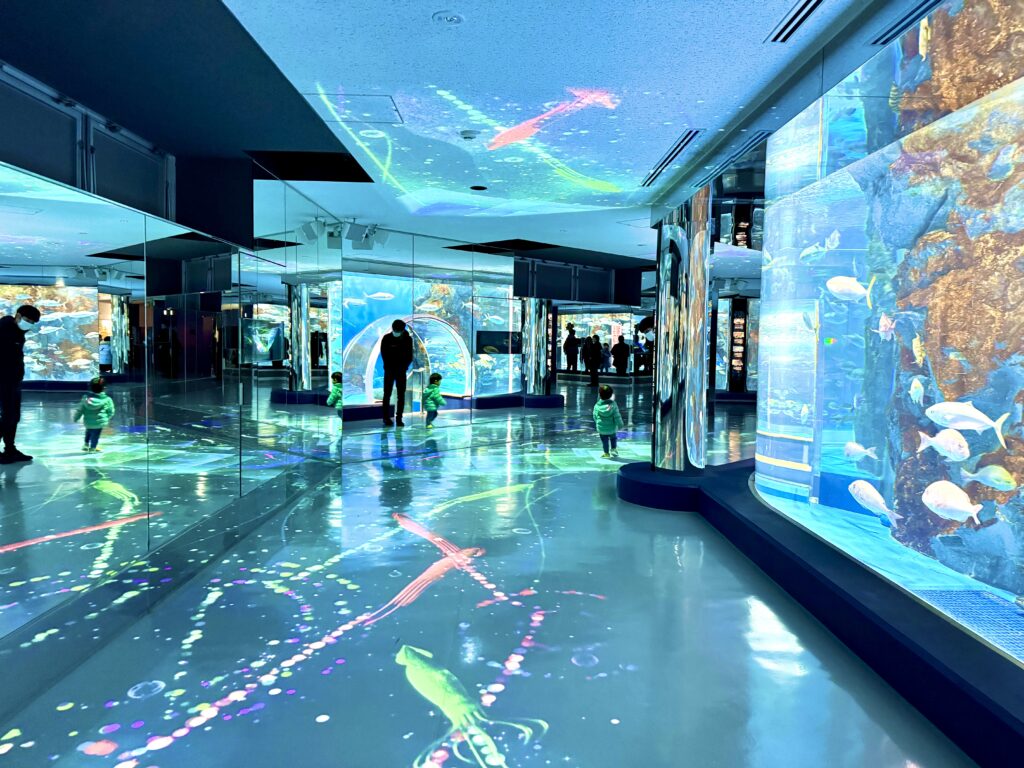
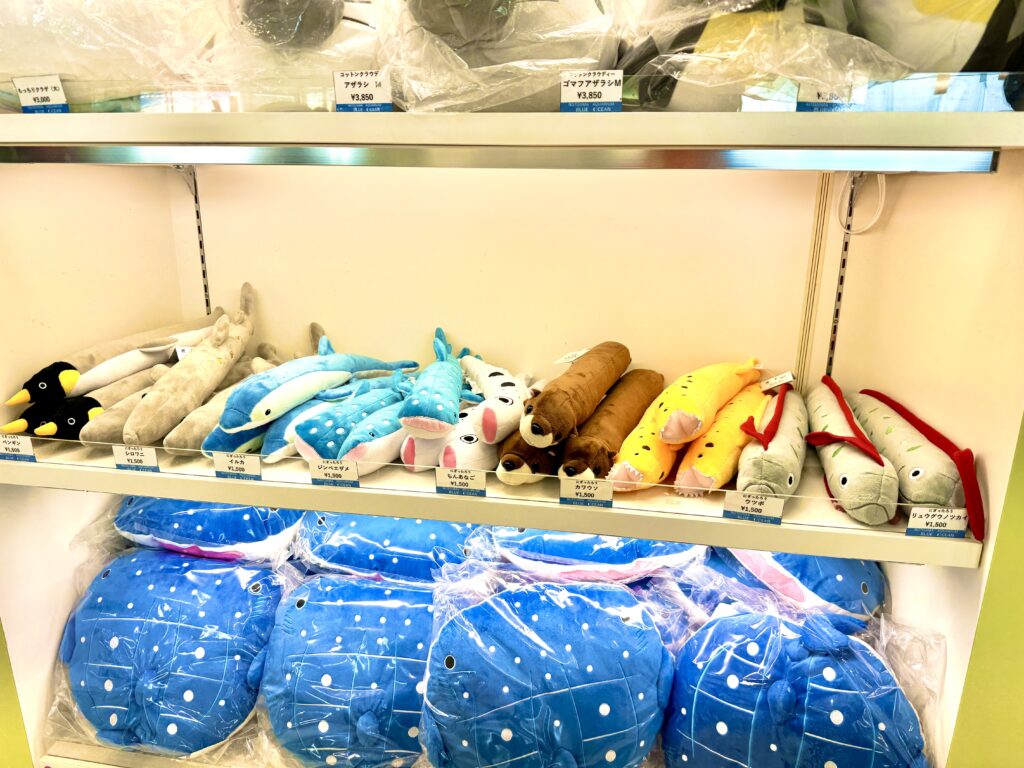
Visiting Notojima Aquarium: Hours, Tickets, and Payment Options
Notojima Aquarium is one of the highlights of Ishikawa Prefecture, offering incredible encounters with dolphins, whale sharks, and other marine life. Before planning your trip, here is a convenient guide to its opening schedule, ticket prices, and payment options.
Opening Period and Hours
| Period | Opening Hours | Notes |
|---|---|---|
| January 1 – December 28 | Open (regular schedule) | Closed from Dec 29 – Dec 31 |
| March 20 – November 30 | 9:00 AM – 5:00 PM | Last entry: 30 min before closing |
| December 1 – March 19 | 9:00 AM – 4:30 PM | Last entry: 30 min before closing |
Admission Fees (Tax Included)
| Category | Regular Price | Group (20+ people) | Group (100+ people) |
|---|---|---|---|
| Adults (High school students & older) | ¥1,890 | ¥1,690 | ¥1,500 |
| Children (Junior high & younger, age 3+) | ¥510 | ¥460 | ¥410 |
| Infants (under 3 years old) | Free | Free | Free |
💡 Tip: Online ticket sales are also available on the official Notojima Aquarium website.
Payment Options
At the ticket counter, gift shop “BLUE OCEAN”, and fast food shop “Dolphin Tale”, you can use a wide range of cashless payments.
Accepted Credit Cards
- JCB, VISA, American Express, MasterCard, Diners Club, UnionPay
(Debit cards of the above brands are also accepted)
Accepted E-Money
- Kitaca, Suica, PASMO, TOICA, manaca, ICOCA, SUGOCA, nimoca, Hayakaken
- nanaco, Rakuten Edy, WAON, QUICPay, iD
Accepted Payment Apps
- PayPay
⚠️ Notes for Visitors:
- Only one payment method can be used per transaction (no split payments).
- Credit cards: single payment only.
- E-money must have sufficient balance; no recharge stations are available inside the aquarium.
Reflection: Why This Place Matters
On many levels, Notojima Aquarium’s story is more than just about marine display. It’s about resilience in the face of disaster. The loss of life—in animals and damage to facilities—was heartbreaking. But the recovery speaks volumes about what local communities value: nature, education, joy, and continuity.
For travelers, visiting the aquarium now isn’t only about seeing fish; it’s about appreciating what it takes to persevere. It’s an opportunity to support a region that is rebuilding, and to witness the beauty of marine life that has endured. It feels meaningful, not just because of what’s on display, but because of the story behind it.
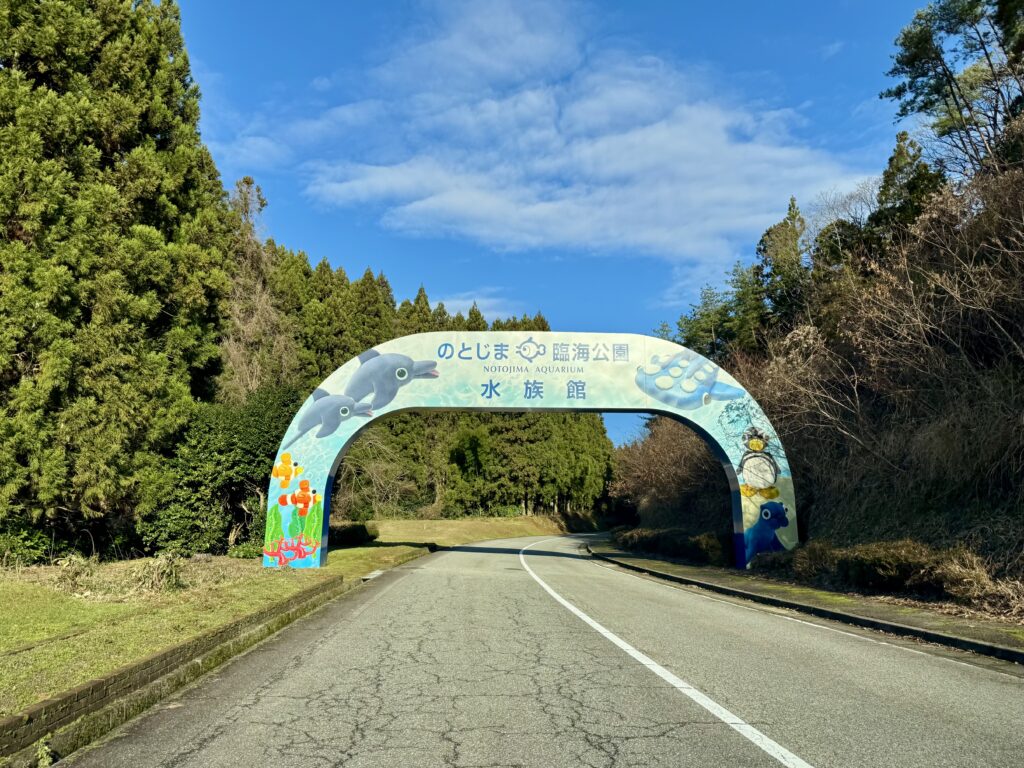
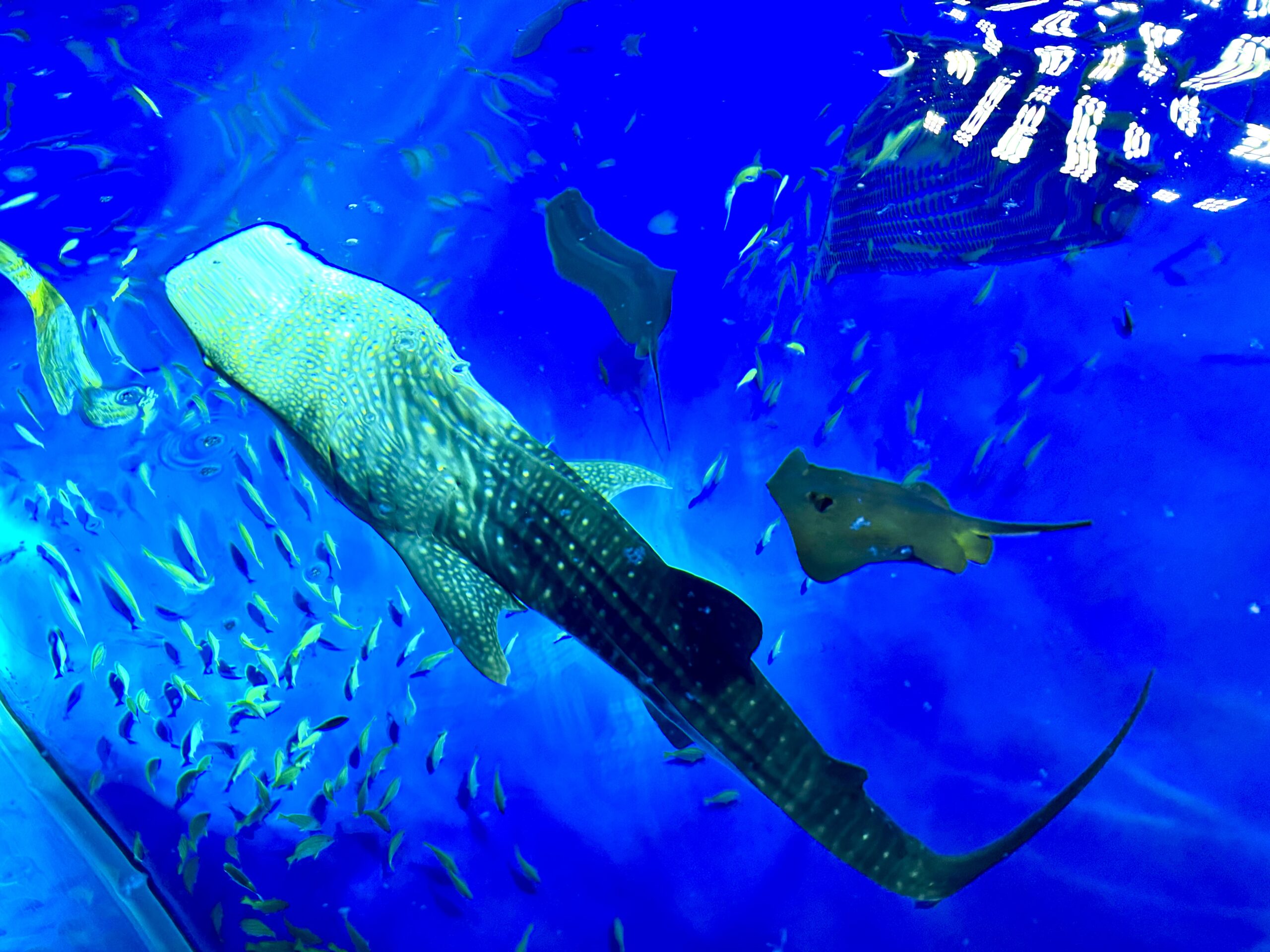


comment